United Kingdom
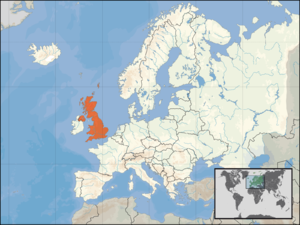
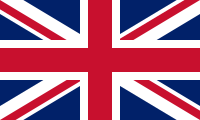

The United Kingdom of Great Britain and Northern Ireland (commonly known as the United Kingdom or as Britain is a kingdom spread across most of the British Isles. The north-western coast of Europe stands off to the southeast.
The United Kingdom covers the island of Great Britain, Northern Ireland and the many smaller islands around the coast. Northern Ireland is the only part of the United Kingdom with a land border; with the Republic of Ireland. Apart from this land border, Britain is surrounded by the Atlantic Ocean, the North Sea, the English Channel and the Irish Sea. Great Britain is linked to France by the Channel Tunnel.
Britain is the cradle of the English language and of political systems and legal tradition which have been carried across the globe, within the Commonwealth and the United States of America but also worldwide by virtue of British and American industrial and financial dominance. Close British influence can be observed in the English language, culture and legal systems of many of its former colonies.
The United Kingdom is a constitutional monarchy with a parliamentary democracy. The seat of government is in Westminster.
The United Kingdom has three legal jurisdictions, each with its own system of law and law courts, namely England and Wales, Northern Ireland and Scotland, and can be reckoned as four constituent parts, namely, England, Northern Ireland, Scotland and Wales. Three devolved administrations were created in the 1990s, to which varying powers have been devolved, in Northern Ireland, in Scotland and in Wales, whose respective seats of government are Belfast, Edinburgh and Cardiff.
In the seas around Britain are three British crown dependencies which are not part of the United Kingdom, namely the bailiwicks of Jersey and Guernsey forming the Channel Islands, and the Isle of Man in the Irish Sea.
Overseas territories
- Main article: British overseas territory
The United Kingdom has fourteen overseas territories which also are not within the United Kingdom. These territories are remaining dependent territories of the British Empire, which at its height in 1922 encompassed almost a quarter of the world's land surface, the largest empire in history. Over the course of the twentieth century the greater part of the territories of the Empire became independent states and formed together the Commonwealth of Nations.
British overseas territories are found in all of the three great oceans and in the Mediterranean and Caribbean seas.
Name
On the creation of the Kingdom in 1801 its official name was the United Kingdom of Great Britain and Ireland. In 1921 though, 26 Irish counties separated from the United Kingdom to create the Irish Free State, and so in 1927 the Royal and Parliamentary Titles Act 1927 changed Parliament's title to "the Parliament of the United Kingdom of Great Britain and Northern Ireland". Although the 1927 Act did not expressly change the name of the United Kingdom itself, as from that date its name has been taken to be the United Kingdom of Great Britain and Northern Ireland.
On British passports, the name of the United Kingdom is given in English, Welsh and Gaelic: as follows:
- English: United Kingdom of Great Britain and Northern Ireland
- Welsh: Teyrnas Gyfunol Prydain Fawr a Gogledd Iwerddon
- Gaelic: Rìoghachd Aonaichte Bhreatainn is Èireann a Tuath
To which one might add in other native languages:
- Scots: Unitit Kinrick o Great Breetain an Northren Irland
- Cornish: Rywvaneth Unys Breten Veur ha Kledhbarth Iwerdhon
Economic and political strength
The United Kingdom is a developed country, with the world's sixth largest economy by nominal gross domestic product and the sixth largest by purchasing power parity.
Britain was the world's first industrialised country[1] and the world's foremost power during the 19th and early 20th centuries,[2] but the economic and social cost of two World Wars and the dissolution of its imperial power in the latter half of the 20th century diminished its leading role in global affairs.
Britain nevertheless remains a major power with strong economic, cultural, military, scientific and political influence. It is a recognised nuclear weapon state and its military spending is the third or fourth highest in the world.[3]
The United Kingdom is a member of the Commonwealth of Nations, a member state of the European Union, a permanent member of the United Nations Security Council, G8, G20, North Atlantic Treaty Organisation, Organisation for Economic Co-operation and Development and the World Trade Organization.
Geography
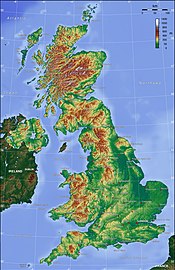
The total area of the United Kingdom is approximately 94,060, of which the island of Great Britain accounts for 80,823 square miles, Northern Ireland for 5,345 square miles and the many smaller islands about the coast have in total about 7,885 square miles.
Great Britain lies between latitudes 49° and 59° N, while the Shetland Islands reach to nearly 61° N, and between longitudes 8° W to 2° E. The Royal Greenwich Observatory in Kent is the defining point of the world's Prime Meridian, known as the Greenwich Meridian. The standard rough-and-ready measurement for the length of Great Britain is Land's End to John O'Groats, a distance of 874 miles by road, 598 miles as the crow flies, between Land's End in Cornwall and John o' Groats in Caithness. Northern Ireland takes in a sixth of the area of Ireland, separated from Great Britain by the North Channel.
Mountains and lowlands
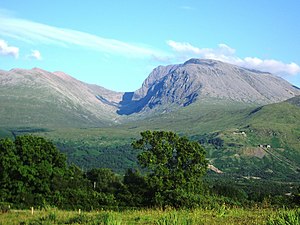
The south and east of Great Britain has mainly lowland terrain. The more mountainous parts lie roughly speaking north-west of a line drawn from the River Tees to the River Exe. The highland zone includes in the southwest Cornwall, Dartmoor (Devon), Exmoor (Devon and Somerset), the Cambrian Mountains of Wales, the Pennines in northern England, including the high limestone hills of the Peak District, the Lakeland Fells of Westmorland, Cumberland, and northern Lancashire, and several mountain ranges in Scotland, where even "the Lowlands" contain the Southern Uplands and the Pentland Hills, and north of the River Forth the grandest mountain ranges of Britain which form the Highlands.
The highest mountain in the United Kingdom is in the Highlands; Ben Nevis in Inverness-shire, 4,409 feet high. Outside the Highlands, the highest mountain is Snowdon in Caernarfonshire, at 3,560 feet. The highest mountain of Northern Ireland is Slieve Donard at 2,789 feet in the Mourne Mountains of County Down. All these, and Scafell Pike, England's own highest peak at 3,209 feet, lie close to the shores of the Irish Sea.
Mountains of the Highlands over 3,000 feet are known as "Munroes" and the 15 or so Welsh mountains over 3,000 feet high are known collectively as the "Welsh 3000s".
The lowland areas of England contain the great river valleys of the Thames, Severn and Trent, and the lands around the Humber. Most of the larger towns and cities are found in this zone.
Lakes and lochs
There are few great bodies of inland water in the United Kingdom. The largest, and the largest in the British Isles, is Lough Neagh where the counties of Antrim, Down, Armagh, Tyrone and Londonderry meet. It covers 153 square miles[4]; enough to swallow Rutland. Fermanagh is home too to grand lakes; Upper Lough Erne and Lower Lough Erne.
The other famed bodies of water are the mountain lochs of the Highlands of Scotland and the lakes of the Lake District, while in low-lying Norfolk and Suffolk are the Broads. The Great Fen stretching from Lincolnshire to Cambridge and the neighbouring counties, and the smaller Somerset Levels were once extensive fenland, much under water with several large lakes. These fenlands have now been drained, leaving Wicken Fen as the last example of ancient wetland.
The coast of the United Kingdom is indented with many deep tidal inlets, some estuaries, creeks and inlets, known as sea lochs or sea loughs in Scotland and Ulster where typically they are clefts in mountainous terrain.
Islands
The United Kingdom has countless islands, islets, rocks and shoals. The greatest island groups are Shetland, Orkney and the Hebrides, to the north and west of the mainland of Scotland. The Hebrides are divided between the Outer Hebrides, a distinctive archipelago out in the ocean and the Inner Hebrides, close to the coast of Great Britain and reaching from the northernmost to the Kintyre peninsula of Argyll a little to the south of Kintyre is Rathlin Island belonging to County Antrim and Northern Ireland's only inhabited island.
The major islands outside these great island groups are Anglesey in the Irish Sea and the Isle of Wight (part of Hampshire) off the south coast.
The Isles of Scilly southwest of mainland Cornwall are the southernmost point of the United Kingdom.
The east coast of Great Britain is remarkably free of substantial off-shore islands and the Irish Sea too, apart from Anglesey and Holy Island and the Isle of Man, a Crown dependency, not part of the United Kingdom.
Government and politics
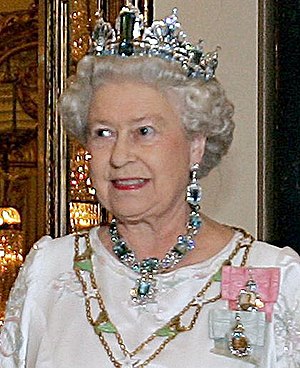
The United Kingdom is a constitutional monarchy. Queen Elizabeth II is head of state of the United Kingdom as well as of fifteen other Commonwealth countries, putting the United Kingdom in a personal union with those other states. The Crown has sovereignty over the Crown Dependencies of the Isle of Man and the Bailiwicks of Jersey and Guernsey, which are not part of the United Kingdom though the UK government manages their foreign affairs and defence and the UK Parliament has the authority to legislate on their behalf.
The United Kingdom has an uncodified constitution which consists of a collection of disparate written sources, including Acts of Parliament, judge-made case law and constitutional conventions. As there is no technical difference between ordinary statutes and "constitutional law"; Parliament can alter the constitution by a simple Act of Parliament, a doctrine known as "Parliamentary sovereignty".
The United Kingdom has a parliamentary system. In a legacy of the British Empire, this system, known as the Westminster system, has been emulated around the world. Parliament meets in the Palace of Westminster in the historic heart of Westminster.
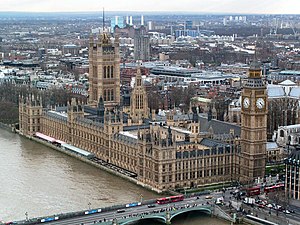
The Prime Minister is Britain's head of government,[5] appointed by the Queen as the member who can obtain the confidence of a majority in the House of Commons, usually the current leader of the largest political party in that chamber. The Prime Minister and Cabinet are formally appointed by The Queen; by convention Her Majesty respects the Prime Minister's choices.[6]
For elections to the House of Commons, the United Kingdom is currently divided into 650 constituencies, each of which elects one Member of Parliament by simple plurality. General elections are called by the Monarch when the Prime Minister so advises and although there is no minimum term for a Parliament, the Parliament Act 1911 requires that a new election be called within five years of the previous general election.
Devolved national administrations
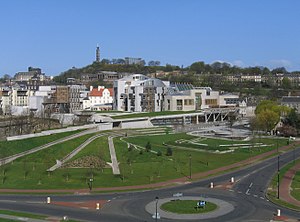
Since 1999, Northern Ireland, Scotland and Wales each has its own devolved institutions with legislative and executive authority, the executive branch led by a First Minister. The devolved authorities are not sovereign bodies but are created and defined by the Parliament of the United Kingdom. The rest of Britain, which is to say England, has no devolved executive or legislature and is administered and legislated for directly by the United Kingdom government and parliament on all issues.
Northern Ireland has the Northern Ireland Assembly and the Northern Ireland Executive. The Assembly enjoys legislative competence in all matters not specifically reserved to the United Kingdom Parliament. The Executive is required to include the main parties composing the Assembly to provide a representation of the unionist and nationalist communities.
Scotland's devolved authorities are the Scottish Parliament and the Scottish Executive, which likewise enjoy all authority over any matter that has not been specifically reserved to the United Kingdom Parliament.
Wales has a Welsh National Assembly primarily with executive powers. It also has authority to enact secondary legislation and to enact "Welsh Assembly Measures" in matters devolved by Legislative Competence Orders. The assembly appoints ministers who constitute the Welsh Assembly Government.
Armed forces
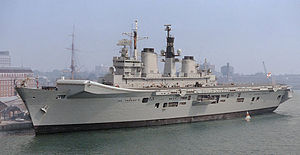
Britain's global presence and influence is further amplified through its trading relations, official development assistance, and its armed forces, which maintain approximately eighty military installations and other deployments around the globe.[7]
The British Army, Royal Navy and Royal Air Force are collectively known as HM Armed Forces. The three forces are managed by the Ministry of Defence and controlled by the Defence Council, chaired by the Secretary of State for Defence.
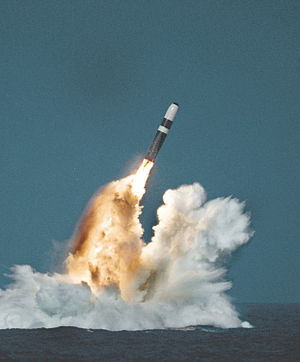
The United Kingdom has one of the most technologically advanced and best trained armed forces in the world. According to various sources, including the Ministry of Defence, the United Kingdom has the third or fourth highest military expenditure in the world, despite only having the 25th largest military in terms of manpower. Total defence spending currently accounts for 2.5% of total national GDP.[8] The UK maintains the largest air force and navy in the EU and second largest in NATO.
The Royal Navy is a "blue-water navy, currently one of the few, along with the navies of France and the United States of America.[9]
The United Kingdom is one of the five recognised countries possessing nuclear weapons, of which the main nuclear capacity consists of Trident II ballistic missile systems carried aboard Vanguard class submarines.
The British Armed Forces are charged with protecting the United Kingdom and its overseas territories, promoting the United Kingdom's global security interests, and supporting international peacekeeping efforts. They are active and regular participants in NATO and other worldwide coalition operations. Overseas garrisons and facilities are maintained at Ascension Island, Belize, Brunei, Canada, Diego Garcia, the Falkland Islands, Germany, Gibraltar, Kenya, Cyprus, and Qatar.[10]
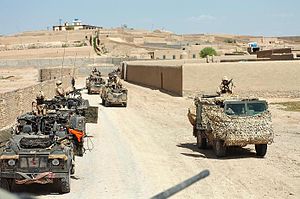
In 2009, the British Army had a reported strength of 146,100, the Royal Air Force had 45,210 personnel and the Navy 39,320.
The United Kingdom Special Forces, such as the Special Air Service and Special Boat Squadron, provide troops trained for quick, mobile, military responses in counter-terrorism, land, maritime and amphibious operations, often where secrecy or covert tactics are required.
There are reserve forces supporting the Active military. These include the Territorial Army, the Royal Naval Reserve, Royal Marines Reserve and the Royal Auxiliary Air Force. This puts total active and reserve duty military personnel at approximately 435,500.
The last war in which the British military fought alone was the |Falklands War of 1982, in which they were victorious over Argentina.
Law and criminal justice
The United Kingdom does not have a single legal system but three; those of:
- England and Wales
- Northern Ireland
- Scotland
In the union of England and Scotland, Article XIX of the Treaty of Union guaranteed the continued existence of Scotland's separate law and legal system. In the union of Great Britain and Ireland the separate Irish legal system was allowed to continue. Thus these three jurisdictions have separate systems of law courts, though all under the Supreme Court of the United Kingdom (which replaced the Appellate Committee of the House of Lords in 2009. The Judicial Committee of the Privy Council, including the same members as the Supreme Court, is the highest court of appeal for the British overseas territories, crown dependencies and several independent Commonwealth countries.
Population
At the census in 2001, the total population of the United Kingdom was 58,789,194; the fifth largest population in the Commonwealth and the twenty-first largest in the world. By mid-2009, this was estimated to have grown to 61,792,000.[11] In 2008, natural population growth overtook net migration as the main contributor to population growth for the first time since 1998.[12] Between 2001 and 2008, the population increased by an average annual rate of 0.5%. This compares to 0.3% a year in the period 1991 to 2001, and 0.2% in the decade 1981 to 1991.[12] Published in 2008, the mid-2007 population estimates revealed that, for the first time, the UK was home to more people of pensionable age than children under the age of 16.[13]
The population of England alone was estimated in mid-2008 at 51.44 million (83% of the population though covering just half of the land area)[12], with a particular concentration in London and the South East. The mid-2008 estimates put Scotland's population at 5.17 million, Wales at 2.99 million and Northern Ireland at 1.78 million,[12]
Languages
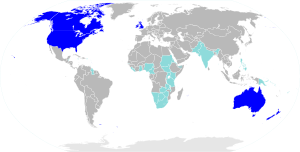
The predominant spoken language of Britain is English. Other languages spoken are:
- Welsh (in the 2001 Census over 21% of the population of Wales said they could speak Welsh)
- Scots (a language descended from Old English and now developing towards being an English dialect, spoken in parts of Scotland and Ulster)
- Gaelic (spoken in the Hebrides and parts of the Highlands. Irish Gaelic is undergoing a cultural revival in some Nationalist circles in Northern Ireland)
The Cornish language, closely related to Welsh, died out in the eighteenth or early nineteenth century, but a reconstructed version is being taught locally.
Religion
Christianity is the largest religion within the United Kingdom in terms of number of adherents, followed by three immigrant religions, Islam, Hinduism and Sikhism and then Judaism.
In the 2001 Census 71.6% of respondents said that Christianity was their religion,[14] although surveys that employ a "harder" question tend to find lower proportions, such as the 2007 Tearfund Survey which revealed that 53% identified themselves as Christian[15] and the 2007 British Social Attitudes Survey, which found that it was almost 47.5%.[16]
The 2007 British Social Attitudes Survey, which covers England, Wales and Scotland, but not Northern Ireland, indicated that 20.87% were part of the Church of England, 10.25% non-denominational Christian, 9.01% Roman Catholic, 2.81% Presbyterian or Church of Scotland, 1.88% Methodist, 0.88% Baptist, other Protestant 1.29, URC/Congregational 0.32%, 0.08% Free Presbyterian, Brethren 0.05% and 0.37% other Christian. Among other religions, 3.30% were Muslim, 1.37% Hindu, 0.43% Jewish, 0.37% Sikh and others 0.35%. A large proportion had no religion at 45.67%. 0.50% did not answer or N/A.[16]
References
- ↑ P. Mathias, The First Industrial Nation: the Economic History of Britain, 1700-1914 (London: Routledge, 2nd edn., 2001), ISBN 0-415-26672-6
- ↑ Ferguson, Niall (2004). Empire, The rise and demise of the British world order and the lessons for global power. Basic Books. ISBN 0465023282.
- ↑ "Stockholm Institute - The 15 Major Spender Countries in 2008". Military Expenditures. Stockholm International Peace Research Institute. http://www.sipri.org/research/armaments/milex/resultoutput/15majorspenders. Retrieved 30 March 2010.
- ↑ "Geography of Northern Ireland". University of Ulster. http://cain.ulst.ac.uk/ni/geog.htm. Retrieved 22 May 2006.
- ↑ "The Government, Prime Minister and Cabinet". Public services all in one place. Directgov. http://direct.gov.uk/en/Governmentcitizensandrights/UKgovernment/Centralgovernmentandthemonarchy/DG_073444. Retrieved 12 February 2010.
- ↑ "Brown is UK's new prime minister". BBC News (BBC News). 27 June 2007. http://news.bbc.co.uk/1/hi/uk_politics/6245682.stm. Retrieved 23 January 2008.
- ↑ "Global Power Europe". Global Power Europe. http://www.globalpowereurope.eu/. Retrieved 17 October 2008.
- ↑ "Defence Spending". MOD. http://www.mod.uk/DefenceInternet/AboutDefence/Organisation/KeyFactsAboutDefence/DefenceSpending.htm. Retrieved 6 January 2008.
- ↑ "The Royal Navy: Britain's Trident for a Global Agenda - The Henry Jackson Society". Henry Jackson Society. http://www.henryjacksonsociety.org/stories.asp?pageid=49&id=279. Retrieved 17 October 2008.
- ↑ "House of Commons Hansard". UK Parliament. http://www.publications.parliament.uk/cgi-bin/newhtml_hl?DB=semukparl&STEMMER=en&WORDS=raf%20diego%20garcia&ALL=RAF&ANY=&PHRASE=%22Diego%20Garcia%20%22&CATEGORIES=&SIMPLE=&SPEAKER=&COLOUR=red&STYLE=s&ANCHOR=50221w33.html_spnew0&URL=/pa/cm200405/cmhansrd/vo050221/text/50221w33.htm#50221w33.html_spnew0. Retrieved 23 October 2008.
- ↑ "Population Change: UK population increases by 394,000". Office for National Statistics. 2010-06-24. http://www.statistics.gov.uk/cci/nugget.asp?id=950. Retrieved 2010-06-25.
- ↑ 12.0 12.1 12.2 12.3 "Population Estimates: August 2009". Office for National Statistics. 27 August 2009. http://www.statistics.gov.uk/pdfdir/pop0809.pdf. Retrieved 28 August 2009.
- ↑ Travis, Alan (22 August 2008). "Ageing Britain: Pensioners outnumber under-16s for first time". The Guardian (London). http://www.guardian.co.uk/world/2008/aug/22/population.socialtrends. Retrieved 23 August 2008.
- ↑ "UK Census 2001". http://www.statistics.gov.uk/cci/nugget.asp?id=293. Retrieved 22 April 2007.
- ↑ "Tearfund Survey 2007" (PDF). http://www.tearfund.org/webdocs/Website/News/Final%20churchgoing%20report.pdf. Retrieved 5 May 2007.
- ↑ 16.0 16.1 Religion by year British Social Attitudes Survey, 2007, Retrieved on 29 November 2009
Outside links
- Official website of the British Monarchy
- Official website of HM Government
- Official Yearbook of the United Kingdom statistics
- Economic and Social Data Ranking
- United Kingdom from UCB Libraries GovPubs